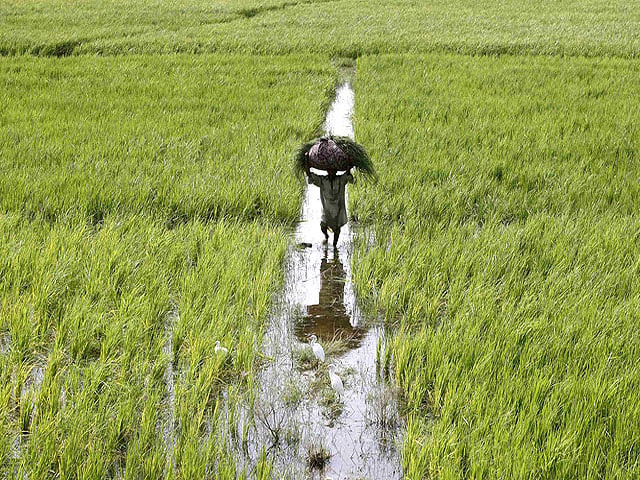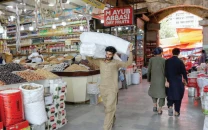In agriculture, livestock grows 4%, outpaces crops
Among major crops, rice and cotton register impressive growth.

According to the Economic Survey of Pakistan2012 – released on Thursday – agriculture grew at 3.1% during fiscal year 2012, compared to 2.4% in the previous year. The fastest growing subset within agriculture was the livestock sector, which grew at 4% this past year. Major crops – the big four mentioned above – grew at an overall rate of 3.1% this year, compared to declining by 0.2% last year. Minor crops (everything else) actually declined by 1.3% in 2012, compared to growth of 2.7% last year.
(All growth rates in the Economic Survey are real growth rates, meaning they have already been adjusted for the effects of inflation.)
The specific break-up of growth within major crops was particularly interesting this year. Cotton production expanded by 18.6% to 13.6 million bales in 2012, boosted mainly by a very healthy 12.6% rise in average yield. Rice production expanded by an even greater 27.7% to 6.2 million tons this year, on the back of a 17.5% rise in average yield.
Neither of these two crops enjoys any government protection, with deregulated markets allowing farmers access to global markets. Higher global commodity prices have allowed farmers to invest in raising their productivity, which accounts for higher yields in both of these crops.
Meanwhile, government-supported wheat and sugarcane crops seem to be suffering. Pakistan’s wheat production declined by 6.7% to 23.5 million tons, despite the government raising its support price by 21% this year. The main culprit behind the smaller crop: a 4.2% drop in yields.
Sugarcane fared marginally better than wheat. Production actually rose by 4.9% to 58 million tons, but this was largely due to a 5.9% increase in the acreage under cultivation. Yields declined by 0.9%.
In minor crops, the sharpest drop occurred in chillies – where production declined by 78.3% to 37,200 tons. Onion production also declined by 15.4% to 1.6 million tons. Nevertheless, some minor crops did well, with potato production increasing by a healthy 17.5% to 4.1 million tons.
Livestock boom
The star in the agriculture sector, however, was livestock – which grew at 4% in 2012. The government seems particularly excited about the possibility of expansion in this sector since it employs about one in every six Pakistanis, including some of the poorest segments of society. In particular, the livestock sector has been identified as a source of potential export revenues for the economy.
Meat exports from Pakistan – mainly to Saudi Arabia, UAE and other parts of the GCC – amounted to approximately $120 million in 2010; the last year for which figures are available. Experts in the livestock sector estimate that the figure for 2011 will be close to $180 million, representing a growth rate of about 50%. This growth is made all the more impressive by the fact that the country has been hit by floods for two years in a row.
The government has initiated seven major projects worth approximately Rs8.8 billion to promote the livestock sector. These include providing veterinary services to livestock farmers, developing feedlots for meat production, installing infrastructure to help reduce wastage in milk collection, etc.
In addition, Pakistan is about to enter the global market for seafood exports; worth about $90 billion worldwide. The government is currently negotiating for access to the European Union’s markets for Pakistani fisheries to sell their products.
Published in The Express Tribune, June 1st, 2012.


















COMMENTS
Comments are moderated and generally will be posted if they are on-topic and not abusive.
For more information, please see our Comments FAQ